Accepted Scientific Name: Mammillaria herrerae Werderm.
Notizbl. Bot. Gart. Berlin-Dahlem 11: 276. 1931

Neomammillaria herrerae (Mammillaria herrerae) Photo by: Flavio Agrosi
This is a small sized cactus whose stems look like little golf balls.
Origin and Habitat: It is endemic to a very small area in Queretaro, Mexico (area of occupancy = 0.87km2 and extent of occurrence = 3.4km2, one location). A total of 430 individuals were censused in two areas in Cadereyta. In the assessment published in 2002 an estimated population of 50 individuals was reported, however this was done considering the only known subpopulation.
Altitude: (1300-)1800-2050(-2500) metres above sea level.
Habitat: It grows mainly in open places between grasses and on sloping calcareous rocks in semi-desert scrub, in association with other cactus species like Echinocactus grusoniiSN|3345]]SN|3345]], Ferocactus hystrix and Thelocactus leucanthus. Mammillaria herreraeSN|9214]]SN|9214]] is considered Critically Endangered due to its small range and a continuing decline due to illegal collection. This threat has caused a serious population reduction (>95%) over the last 3 generations (approximately 20 years). The habitat is now well-known to both commercial and amateur collectors. A nearby commercial cactus nursery has almost stripped the site. Local children collect and offer plants to visitors.
Synonyms:
See all synonyms of Mammillaria herrerae
Common Names include:
ENGLISH: Golf's Ball Cactus, Golf ball
RUSSIAN (Русский): Маммиллярия Эрреры
SPANISH (Español): Biznaguita, Bola de hilo, Cabeza blanca
Description: Mammillaria herreraeSN|9214]]SN|9214]] is small growing cactus that look like a little golf ball. The most striking feature is dense addpressed, white spination it possesses, which serve to protect it from the harsh sun common to its native habitat. More precisely the spines benefit the plant by reducing sun exposure and by trapping a layer of air next to the cactus body. This helps to cool the plant in the summer and keep it warm in the winter.
Habit: It usually stays solitary, or occasionally clusters from the base.
Stems: Globose or slightly elongated as it ages, 2 - 3.5 cm in diameter and height. (In cultivation it can grow very slowly up to 8 cm tall). Without latex.
Tubercles: Closely set, cylindrical, terminally truncate. The axil is naked.
Radial spines: 100 or more, unequal, interlacing, bristly, white or grey, 1-5 mm long.
Central spines: Absent.
Flowers: Diurnal, quite large for a Mammillaria, pale pink to red-violet, 20 - 25 mm long and very showy.
Blooming season: April to May, it starts flowering when it gets to be 5-7 years old, and reaches at least 3 cm in diameter.
Fruits: Globose, whitish, small.
Seeds: Blackish brown.
Subspecies, varieties, forms and cultivars of plants belonging to the Mammillaria herrerae group
Notes: This beautiful and peculiar cactus was first described by Werdermann in 1931, and re-found in Queretaro, Mexico under Lau's field number L 711 at Vista Hermosa, Queretaro, Mexico, 1300-1800 m, in 9/6/1974.
Bibliography: Major references and further lectures
1) Edward Anderson “The Cactus family” Timber Press, Incorporated, 2001
2) James Cullen, Sabina G. Knees, H. Suzanne Cubey "The European Garden Flora Flowering Plants: A Manual for the Identification of Plants Cultivated in Europe, Both Out-of-Doors and Under Glass" Cambridge University Press, 11/Aug/2011
2) David R Hunt; Nigel P Taylor; Graham Charles; International Cactaceae Systematics Group. "The New Cactus Lexicon" dh books, 2006
3) John Pilbeam “Mammillaria: the cactus file handbook” Cirio Publishing Services Ltd Dec/30,/1999
4) Gómez-Hinostrosa, C., Guadalupe Martínez, J. & Sánchez , E. 2013. Mammillaria herrerae. The IUCN Red List of Threatened Species. Version 2015.2. <www.iucnredlist.org>. Downloaded on 22 June 2015.
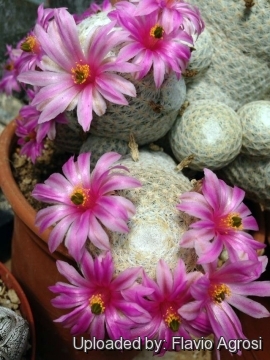 Neomammillaria herrerae (Mammillaria herrerae) Photo by: Flavio Agrosi
Neomammillaria herrerae (Mammillaria herrerae) Photo by: Flavio Agrosi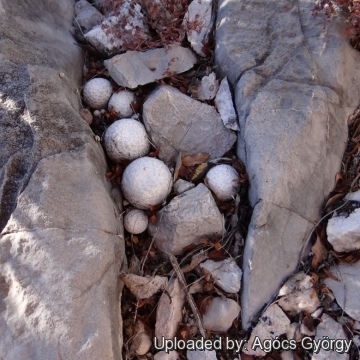 Stems look like little golf ball. The addpressed, white spination it possesses, serves to protect it from the harsh sun. (Mammillaria herrerae) Photo by: Agócs György
Stems look like little golf ball. The addpressed, white spination it possesses, serves to protect it from the harsh sun. (Mammillaria herrerae) Photo by: Agócs György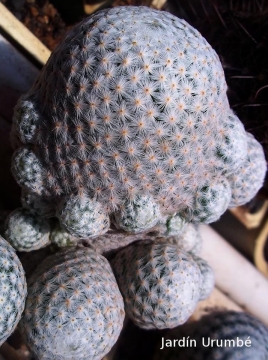 Neomammillaria herrerae (Mammillaria herrerae) Photo by: Alexander Arzberger
Neomammillaria herrerae (Mammillaria herrerae) Photo by: Alexander Arzberger Neomammillaria herrerae (Mammillaria herrerae) Photo by: Valentino Vallicelli
Neomammillaria herrerae (Mammillaria herrerae) Photo by: Valentino Vallicelli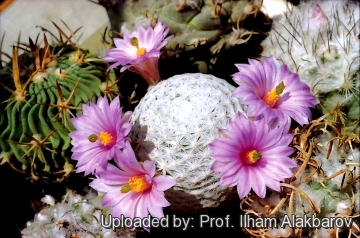 Neomammillaria herrerae (Mammillaria herrerae) Photo by: Prof. Ilham Alakbarov
Neomammillaria herrerae (Mammillaria herrerae) Photo by: Prof. Ilham Alakbarov Neomammillaria herrerae (Mammillaria herrerae) Photo by: Andrea B.
Neomammillaria herrerae (Mammillaria herrerae) Photo by: Andrea B.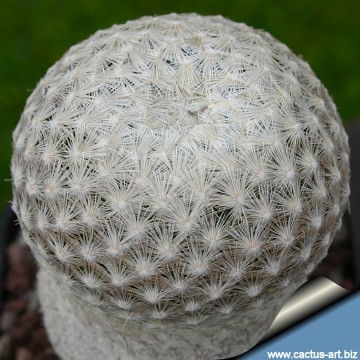 Neomammillaria herrerae (Mammillaria herrerae) Photo by: Cactus Art
Neomammillaria herrerae (Mammillaria herrerae) Photo by: Cactus Art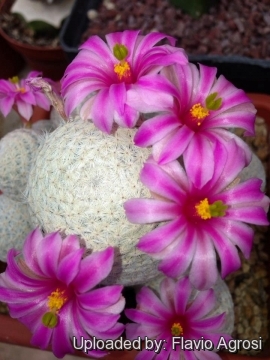 Neomammillaria herrerae (Mammillaria herrerae) Photo by: Flavio Agrosi
Neomammillaria herrerae (Mammillaria herrerae) Photo by: Flavio AgrosiCultivation and Propagation: Mammillaria herreraeSN|9214]]SN|9214]] is a most beautiful cactus but rarely seen in cultivation. This plant isn't famous for being easy to cultivate, but in good conditions with excellent ventilation, it grows without great difficulty. It is especially sensitive to overwatering. So careful watering and an open mineral potting soil are a must. Be careful to encourage slow growth. For this reasons the plant is often grafted on a frost hardy stock.
Soil: Use mineral well-permeable substratum. Avoid the use of peat or other humus sources in the potting mixture. Don't add limestone to the potting mix (which must be moderately acidic). It needs perfect drainage to flourish.
Repotting: Repotting every 2-3 years. As it is especially prone to rot under-pot in a smaller container filled with very porous compost. Use pot with good drainage.
Exposition: This plant need full sun Requires maximum sun exposure to reach its full potential, and to achieve success in flowering, and above all it needs a very good ventilation, especially in winter. Strong light encourages an heavy spine production.
Watering: Water sparingly during the growing season and keep totally dry during winter. In the rest period no high atmospheric humidity!!Care must be taken with watering as they tends to become swollen and untidy in growth habit if given too much water and shade.
Fertilization: During the growing season enrich the soil using a fertilizer rich in potassium and phosphorous, but poor in nitrogen, because this chemical element doesn’t help the development of succulent plants, making them too soft and full of water.
Hardines: It can be sensitive to frost (but if dry it is resistant to -5° C or less). Mature individuals - if the growing conditions are not optimal, easily rot and die.
Pests & diseases: It may be attractive to a variety of insects to watch for:
- Red spiders: Sensitive to red spider mite. Overhead watering is helpful in controlling mites.
- Mealy bugs: Occasionally mealy bugs they develop aerial into the new growth among the wool with disfiguring results, but the worst types develop underground on the roots and are invisible except by their effects.
- Rot: Rot it is the major threat . If the plants are not watered and “aired” correctly, fungicides won't help all that much.
Remarks: Displaying your cacti on shelves has the added benefit of keeping them off the ground and away from potential rodent or snail damage.
Propagation: Seed or grafting. (it usually doesn't produces offsets). Seeds germinate in 7-14 days at 21-27° C in spring, remove the glass cover gradually as the plants develops and keep ventilated, no full sun for young plants! The seedlings should not be disturbed until they are well rooted, after which they can be planted separately in small pots. Seeds are relatively difficult to germinate (only a limited percentage of seeds germinate). Grafting is often used to speed growth rate and to create a back-up for plants in collection.
Your Photos
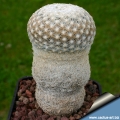
by Cactus Art
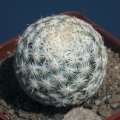
by Valentino Vallicelli

by Valentino Vallicelli






















